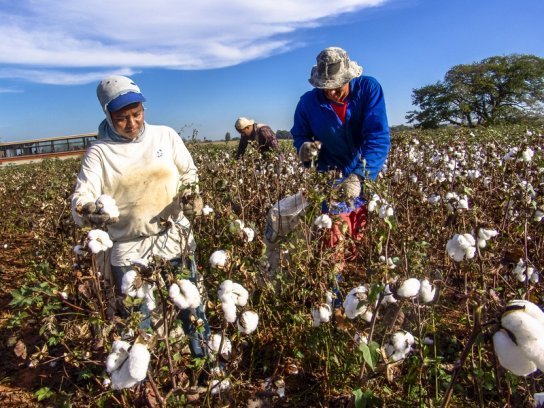
Lenzing rolls out blockchain enabled traceability platform
Traceability technologies: applications, market drivers and key innovators.

5th September 2023
Knitting Industry
|
United Kingdom
Textile and clothing manufacturers, brands and retailers face growing pressure from consumers and government regulations to address fraud, identify human rights issues and other malpractices, and substantiate claims made about the environmental sustainability of their products, according to Traceability technologies: applications, market drivers and key innovators - a 35-page report from the global business information company Textiles Intelligence.
Traceability technologies can help these companies and other organisations to combat such challenges by enabling them to verify the origins of the materials used in their products along their supply chains.
Digital traceability technologies, for example, make it possible for a company to produce a record of a product’s journey along the supply chain and identify suppliers at each stage. Physical traceability technologies, meanwhile, enable a product’s material composition to be analysed in order to identify the provenance of the product accurately.
Additionally, traceability technologies can help apparel brands and retailers to provide evidence of the environmental sustainability of the materials used in their products. This is required in particular in France under the new French regulation Anti-Gaspillage et pour l’Economie Circulaire (AGEC), or Anti-Waste for a Circular Economy Law.
In the USA, apparel brands and retailers must ensure that “goods mined, produced, or manufactured wholly or in part with forced labour … are not imported into the United States”. In practice, organisations seeking to continue the importation of goods into the USA must provide “clear and convincing evidence” that the goods were not manufactured with forced labour. Traceability technologies can help companies to meet these obligations, which are set out in the Uyghur Forced Labor Prevention Act (UFLPA).
Looking ahead, the market for traceability technologies is set for exponential growth in the coming years. This is partly a result of new and forthcoming legislation which demands that textile and clothing organisations eliminate the use of malpractices along their supply chains and provide more transparency.
TrusTrace, a digital traceability platform headquartered in Stockholm, Sweden, expects to benefit from such growth - having already experienced a 350% surge in demand for its offerings in 2022 compared with the previous year.
Three other companies, FibreTrace, Oritain, and Smartex, have developed pioneering technologies which will enable textile and clothing organisations to improve the transparency of their supply chain - even supply chains which are highly complex and comprise several tiers of suppliers.
However, several innovators in the field of traceability technologies are set to emerge as competitors to these three companies - notably Arylla, Haelixa and IN-Code Technologies.
Traceability technologies: applications, market drivers and key innovators is available for purchase from Knitting Industry.
Other recently published reports from Textiles Intelligence include:
Editorial: Why are EU and US textile and clothing imports declining?
World textile and apparel trade and production trends: South-East Asia, August 2023

Business intelligence for the fibre, textiles and apparel industries: technologies, innovations, markets, investments, trade policy, sourcing, strategy...
Find out more